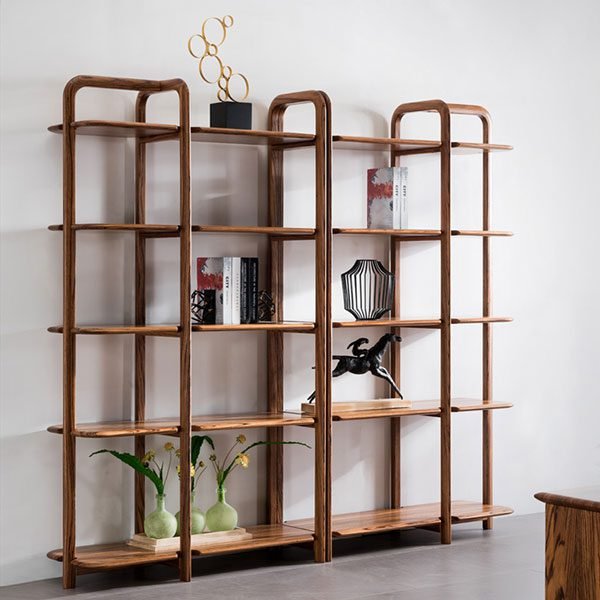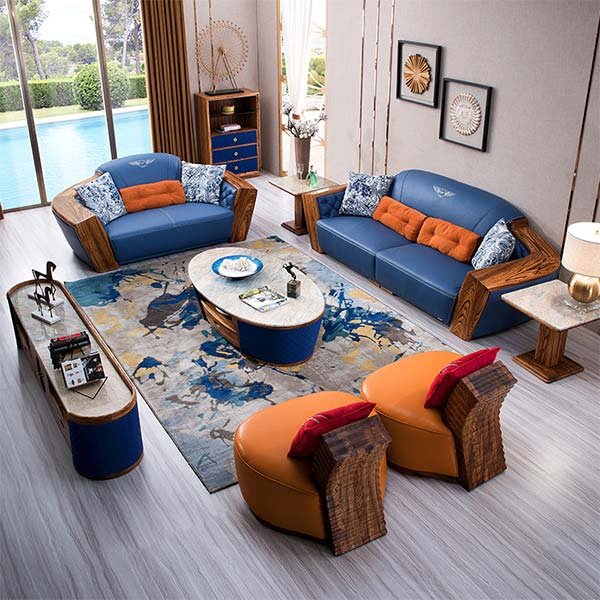“Discover the Timeless Beauty of Wooden Furniture, Blending Tradition with Modern Elegance”
Traditional Wooden Furniture: Exploring the Timeless Beauty and Craftsmanship
Traditional Wooden Furniture: Exploring the Timeless Beauty and Craftsmanship
Wooden furniture has been a staple in homes for centuries, and its enduring popularity can be attributed to its timeless beauty and craftsmanship. Traditional wooden furniture exudes a sense of elegance and sophistication that is unmatched by any other material. In this article, we will delve into the world of traditional wooden furniture, exploring its various styles and the craftsmanship that goes into creating these masterpieces.
One of the most prominent styles of traditional wooden furniture is the classic Victorian style. This style is characterized by its ornate carvings, intricate details, and rich, dark wood finishes. Victorian furniture often features curved lines and floral motifs, adding a touch of romance and opulence to any space. The craftsmanship involved in creating Victorian furniture is truly remarkable, with skilled artisans meticulously carving each intricate detail by hand.
Moving on to the Colonial style, we find a more simplistic and rustic approach to traditional wooden furniture. Colonial furniture is known for its clean lines, sturdy construction, and natural finishes. This style often incorporates elements of nature, such as woven cane or rush seats, adding a touch of warmth and authenticity to the pieces. The craftsmanship behind Colonial furniture lies in its simplicity, with an emphasis on functionality and durability.
Next, we have the timeless beauty of the Arts and Crafts style. This style emerged in the late 19th century as a reaction against mass-produced, machine-made furniture. Arts and Crafts furniture is characterized by its clean, simple lines, and emphasis on natural materials. Craftsmen of this style focused on handcrafted details, such as exposed joinery and hand-carved motifs, showcasing their dedication to the art of woodworking.
Moving into the realm of traditional wooden furniture from the Far East, we encounter the exquisite beauty of Chinese and Japanese styles. Chinese furniture is known for its intricate joinery techniques, delicate carvings, and lacquered finishes. Each piece is a work of art, with skilled craftsmen spending countless hours perfecting every detail. Japanese furniture, on the other hand, emphasizes simplicity and minimalism. The clean lines and natural finishes of Japanese furniture create a sense of tranquility and harmony in any space.
Lastly, we cannot forget the charm of rustic farmhouse furniture. This style embraces the imperfections and natural beauty of wood, often featuring distressed finishes and reclaimed materials. Rustic farmhouse furniture exudes a cozy and inviting atmosphere, with its warm tones and weathered textures. Craftsmanship in this style lies in the ability to transform reclaimed materials into functional and aesthetically pleasing pieces.
In conclusion, traditional wooden furniture encompasses a wide range of styles, each with its own unique beauty and craftsmanship. From the ornate carvings of Victorian furniture to the simplicity of Colonial and Arts and Crafts styles, traditional wooden furniture has stood the test of time. The dedication and skill of craftsmen shine through in every piece, creating furniture that is not only functional but also a work of art. Whether you prefer the elegance of Chinese and Japanese styles or the rustic charm of farmhouse furniture, traditional wooden furniture offers something for everyone.
Contemporary Wooden Furniture: Embracing Minimalism and Innovative Designs
Contemporary Wooden Furniture: Embracing Minimalism and Innovative Designs
Wooden furniture has been a staple in homes for centuries, with its timeless beauty and durability. Over the years, different styles and designs have emerged, catering to various tastes and preferences. One such style that has gained popularity in recent years is contemporary wooden furniture. This style embraces minimalism and innovative designs, creating pieces that are both functional and visually appealing.
Contemporary wooden furniture is characterized by clean lines, simplicity, and a focus on functionality. Unlike traditional wooden furniture, which often features intricate carvings and ornate details, contemporary pieces have a more streamlined and minimalist aesthetic. This style is perfect for those who prefer a clean and uncluttered look in their homes.
One of the key features of contemporary wooden furniture is its innovative designs. Designers are constantly pushing the boundaries of what is possible with wood, creating unique and eye-catching pieces. From sleek and modern dining tables to minimalist bookshelves, contemporary wooden furniture offers a wide range of options for every room in the house.
In addition to its aesthetic appeal, contemporary wooden furniture also offers practical benefits. Many pieces are designed with functionality in mind, incorporating features such as hidden storage compartments or adjustable shelves. This makes them not only beautiful but also highly functional, allowing homeowners to make the most of their space.
Another advantage of contemporary wooden furniture is its versatility. It can easily be incorporated into any interior design style, whether it be modern, industrial, or Scandinavian. The clean lines and neutral tones of contemporary wooden furniture make it a versatile choice that can complement a wide range of decor styles.
When it comes to materials, contemporary wooden furniture often combines wood with other materials such as glass, metal, or leather. This combination adds a touch of modernity and sophistication to the pieces, creating a unique and stylish look. It also allows for greater flexibility in design, as different materials can be used to create interesting contrasts and textures.
In terms of sustainability, contemporary wooden furniture is also a great choice. Many designers and manufacturers are now using sustainable and eco-friendly materials, ensuring that their pieces are not only beautiful but also environmentally responsible. This makes contemporary wooden furniture a great option for those who are conscious of their carbon footprint.
In conclusion, contemporary wooden furniture offers a fresh and modern take on traditional wooden furniture. With its clean lines, minimalist aesthetic, and innovative designs, it is a style that is both visually appealing and highly functional. Whether you prefer a sleek dining table or a minimalist bookshelf, contemporary wooden furniture has something to offer for every taste and style. So why not embrace the beauty and versatility of contemporary wooden furniture and bring a touch of modernity to your home?
Transitional Wooden Furniture: Combining Elements of Traditional and Contemporary Styles
Transitional Wooden Furniture: Combining Elements of Traditional and Contemporary Styles
Wooden furniture has always been a popular choice for homeowners due to its timeless appeal and durability. Over the years, different styles of wooden furniture have emerged, ranging from traditional to contemporary. However, there is a style that combines the best of both worlds – transitional wooden furniture. In this article, we will delve into the world of transitional wooden furniture and explore how it seamlessly blends elements of traditional and contemporary styles.
Transitional wooden furniture is characterized by its ability to bridge the gap between traditional and contemporary design. It takes inspiration from both styles and creates a harmonious balance that appeals to a wide range of tastes. This style is perfect for those who appreciate the warmth and elegance of traditional furniture but also desire the clean lines and simplicity of contemporary design.
One of the key features of transitional wooden furniture is its use of neutral colors. Unlike traditional furniture, which often features rich and dark tones, transitional pieces tend to have a more subdued color palette. This allows them to blend effortlessly with both traditional and contemporary interiors. Neutral colors such as beige, gray, and taupe are commonly used, creating a sense of calm and sophistication.
Another characteristic of transitional wooden furniture is its emphasis on clean lines and simplicity. While traditional furniture often showcases intricate carvings and ornate details, transitional pieces have a more streamlined and minimalist aesthetic. This simplicity gives them a contemporary edge while still maintaining a sense of timeless elegance.
In terms of materials, transitional wooden furniture often combines different types of wood to create a unique and visually appealing look. For example, a dining table may feature a combination of oak and walnut, or a coffee table may incorporate both cherry and maple. This blending of woods adds depth and texture to the furniture, making it a focal point in any room.
When it comes to the design of transitional wooden furniture, it often incorporates elements from both traditional and contemporary styles. For instance, a transitional dining chair may have a classic silhouette but feature modern upholstery or sleek metal accents. This fusion of styles creates a visually interesting and versatile piece that can complement a variety of interior design schemes.
Transitional wooden furniture is also known for its versatility. It can effortlessly transition between different rooms and styles, making it a practical choice for those who like to change their interior decor frequently. Whether you have a traditional living room or a contemporary bedroom, transitional furniture can seamlessly fit into any space.
In conclusion, transitional wooden furniture offers a unique blend of traditional and contemporary styles. Its neutral colors, clean lines, and combination of different woods make it a versatile and visually appealing choice for any home. Whether you prefer the warmth of traditional design or the simplicity of contemporary aesthetics, transitional furniture provides the perfect balance. So, if you’re looking to add a touch of elegance and modernity to your home, consider incorporating transitional wooden furniture into your interior design.
Заключение
Заключение: Изучение различных стилей деревянной мебели позволяет понять, как они эволюционировали от традиционных к современным. Традиционная деревянная мебель характеризуется классическими формами, резьбой и узорами, в то время как современная мебель обладает более современным дизайном, простыми линиями и минималистичным подходом. От выбора стиля зависит общий вид и атмосфера помещения, поэтому важно учитывать собственные предпочтения и стиль интерьера при выборе деревянной мебели.



